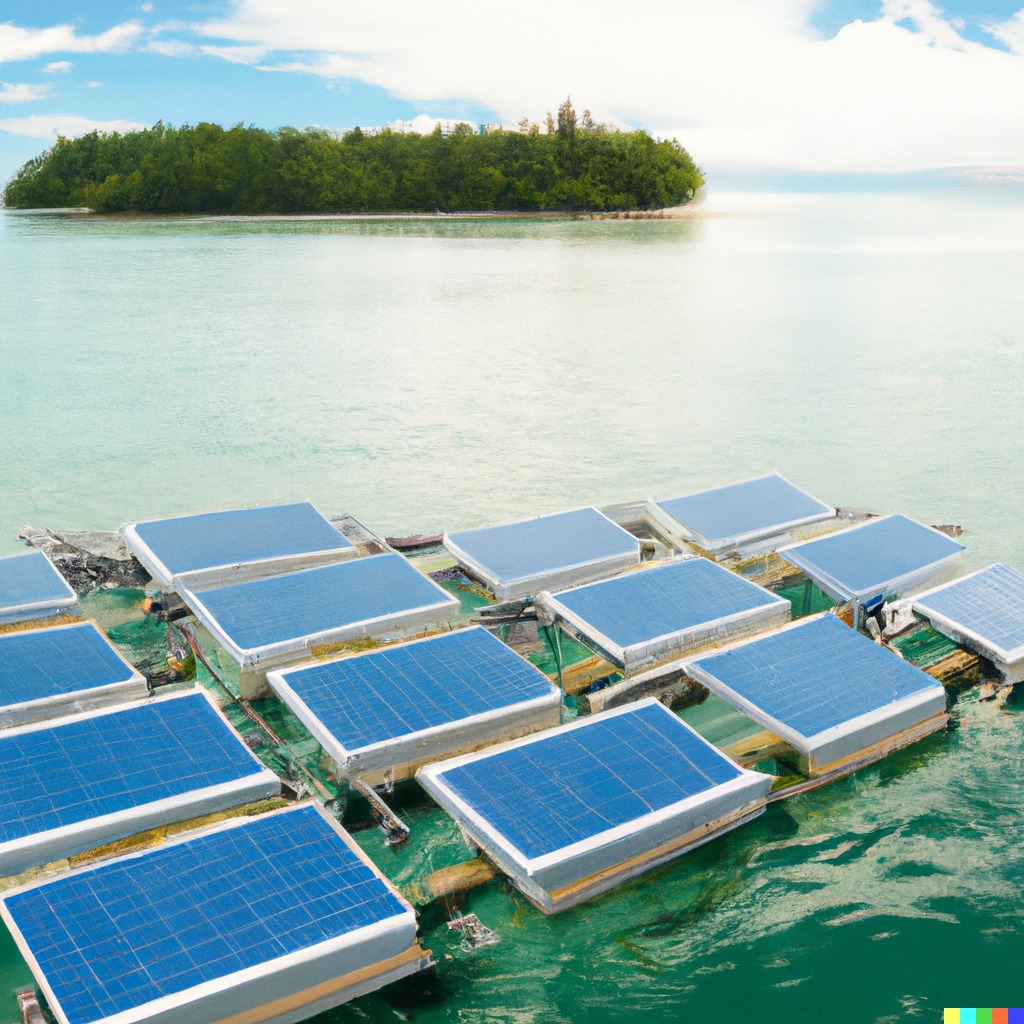Power Generation Options for Private Islands
Modern power supply options for eco resorts have changed dramatically. Solar power is now cost-competitive, and it can sometimes be cheaper than fossil fuels. Moreover, investing in green energy often maximizes return on investment while preserving the natural environment.
Key Components for Solar and Battery Storage Systems
Solar Panels (Photovoltaic Modules)
Solar panels form the heart of a solar power setup. They convert sunlight into electricity using photovoltaic cells. When designing this system, consider the resort’s energy needs, available installation space, and regional solar irradiance. These factors help determine the required number and capacity of panels.
Mounting Structures
Mounting structures firmly secure solar panels to rooftops or ground surfaces. The design depends on installation location—such as pitched roofs, flat roofs, or open ground. These structures must endure wind loads and provide an optimal tilt and orientation for maximum solar capture.
Private Island Power Generation Options – Inverters
Inverters transform direct current (DC) from solar panels into alternating current (AC). This conversion makes the generated electricity compatible with the resort’s electrical system. Inverter type and capacity vary based on total solar capacity and overall energy demand.
Battery Storage
Battery storage is vital in eco resorts because it stores excess solar energy for nighttime or cloudy periods. Lithium-ion batteries dominate the market due to their high energy density, long lifespan, and strong efficiency. You can determine battery size by analyzing the resort’s consumption patterns and desired backup capacity.
Charge Controllers
Charge controllers regulate electricity flow between solar panels and batteries. They prevent overcharging, avoid deep discharging, and ensure efficient energy transfer. Although Pulse Width Modulation (PWM) controllers work for smaller setups, Maximum Power Point Tracking (MPPT) controllers typically suit larger systems.
Power Conditioning Equipment
Power conditioning components—like transformers, surge protectors, and voltage regulators—stabilize electricity from solar panels and batteries. They maintain consistent voltage and power quality, enabling safe integration with the resort’s electrical infrastructure.
Monitoring and Control Systems
Monitoring and control tools deliver real-time data on energy production, storage levels, usage patterns, and system efficiency. This oversight helps detect performance issues, optimize energy output, and inform maintenance decisions.
Backup Generator (Optional)
Some eco resorts include a backup generator to handle prolonged low-sunshine days or unusually high demand. While this option ensures an uninterrupted power supply, it may increase fossil fuel usage. Consequently, you should weigh the trade-offs carefully.
Designing and Sizing the Solar-Battery System
Assess Energy Demand
Start by conducting an energy audit to identify the resort’s peak and average consumption. This information helps you calculate the solar and battery capacity needed for reliable power generation.
Evaluate Solar Resources
Next, analyze solar irradiance data to estimate energy potential. Combine this data with the available installation area to determine the quantity and size of solar panels. Accurate estimates lead to more efficient system design.
Private Island Power Generation Options – Battery Sizing
Determine how long the resort must run without sunlight and set the battery’s capacity accordingly. Additionally, align battery size with your energy consumption profile, solar generation schedule, and battery efficiency.
Final Considerations
The above summary outlines the main components of a solar-battery power system, along with basic design and sizing steps. It can guide preliminary budgeting and help determine the required land area for equipment. However, each eco resort has unique needs. For a detailed assessment of power requirements and precise array sizing, please contact us directly.
Detailed information on Private Island Power Generation Options check out our Facebook, X and Instagram accounts or check out Kepri Estates YouTube channel. For more information on how to capitalise on this new premium eco resort destination, check out Kepri Estates Private Island FAQ and Services page.

